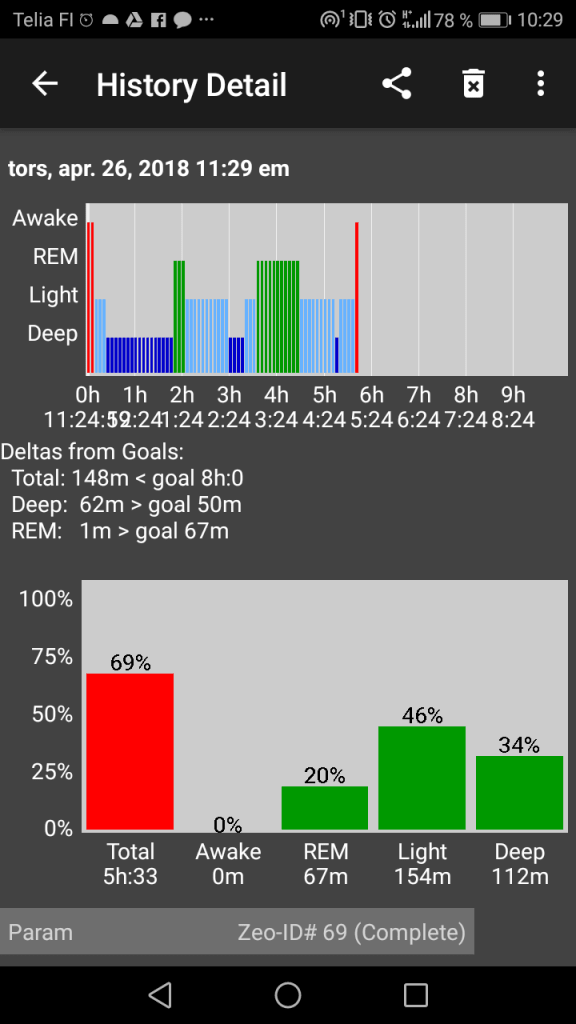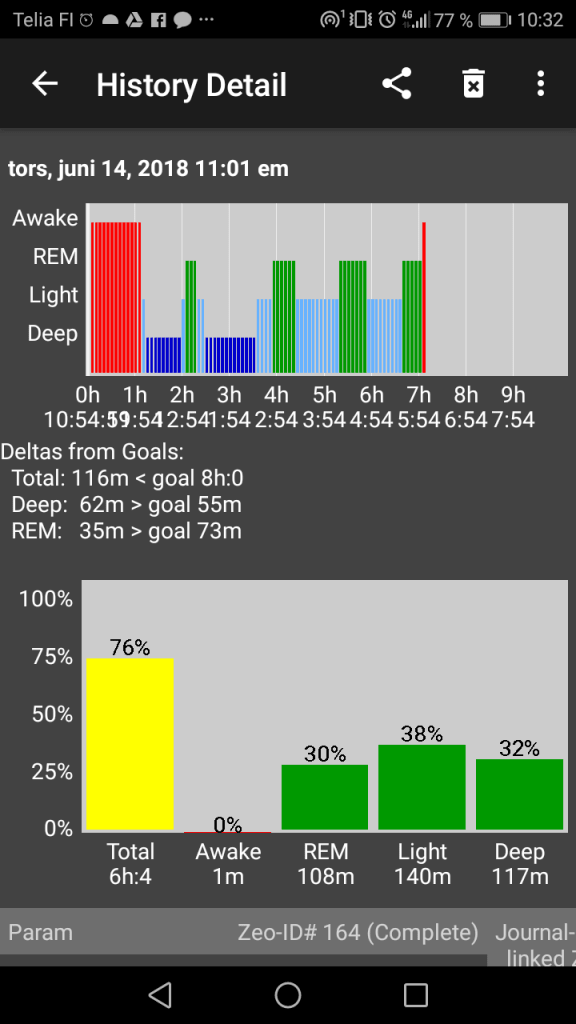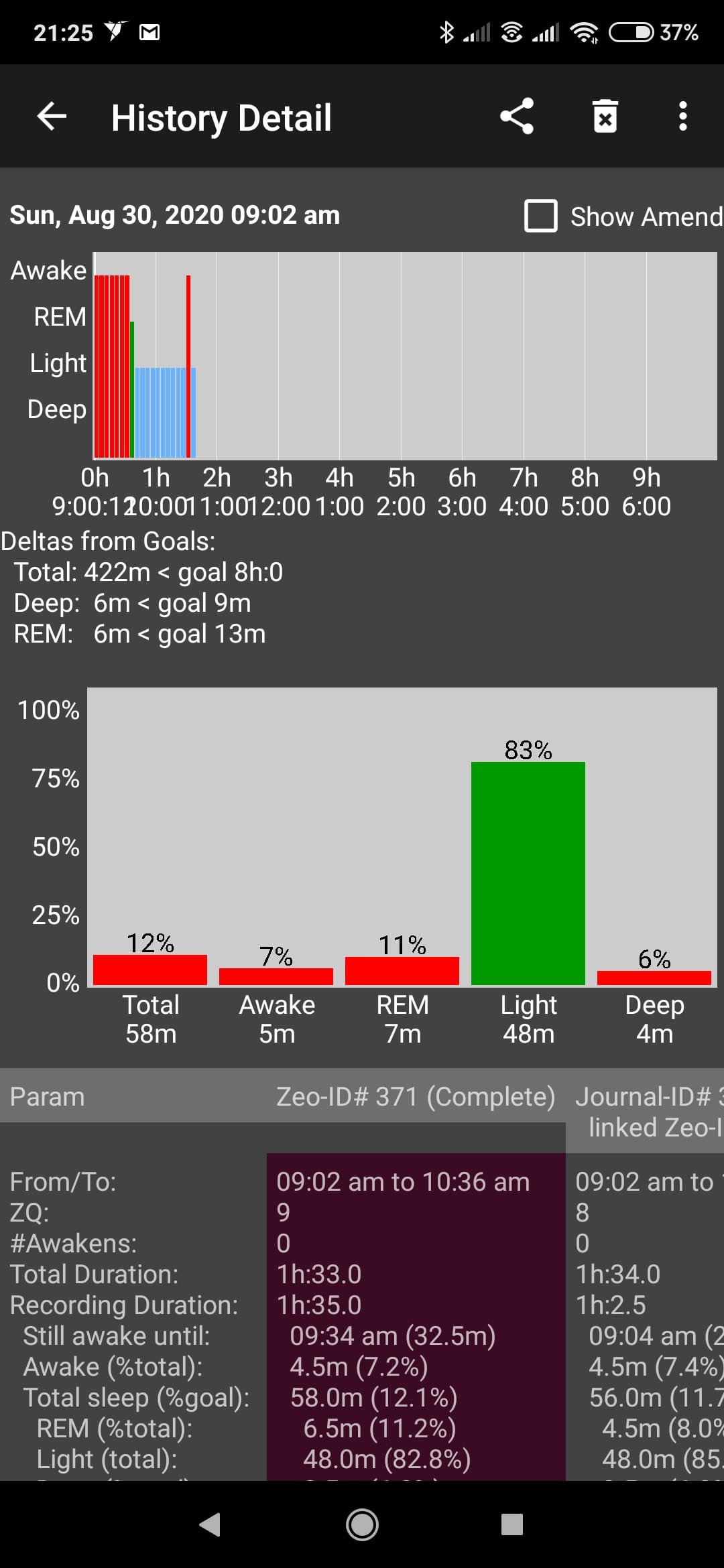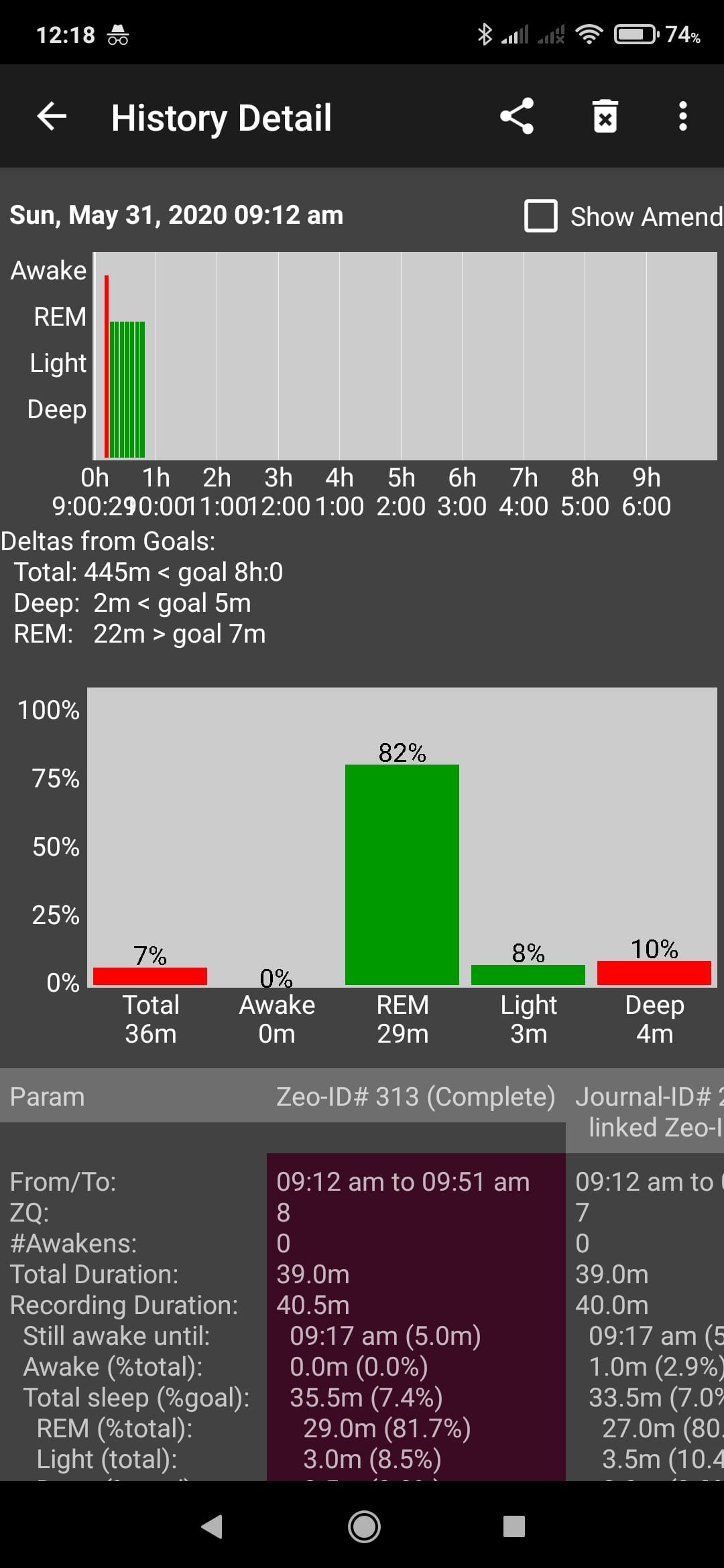Introduction
Sleep being able to repartition seems like a very weird concept, right? That is actually a term that we polyphasic sleepers use! Basically, it means the rearrangement of sleep stages in each specific sleep block. Thus, this also indicates that the normal sleep stage order in a regular sleep cycle may no longer apply in a polyphasic sleep block. Apparently, repartitioning is a ubiquitous concept for even short naps, not just core sleeps.
You ever heard people keep talking about their juicy 20-minute naps replete with REM sleep? Or that specific core sleep with super dense SWS population, etc. Either way, this post will list the details regarding the repartitioning of sleep stages on a polyphasic sleep schedule.
Repartitioning Mechanics
Core Repartition
The repartitioning process happens as follows:
- The core will first have a significant portion of light sleep.

- The example here shows an E1 core (6 hours) as adaptation begins. SWS dominates the first sleep cycle, while REM sleep takes over the second half of sleep duration. So far, this is the same as on monophasic sleep.
- The order of sleep stages looks even somewhat messy, with some trace SWS amount near the end of the core.

- Over time, repartition occurs in the core sleep. This usually happens via REM sleep’s appearance in earlier core cycles.
- During this process, REM sleep appears much earlier in the night than usual.
- SWS heavily concentrates in the first two or three cycles. Therefore, there is usually minimal to no SWS in later cycles.
- REM sleep dominates the remaining sleep cycles, alternating with NREM2. REM sleep becomes more and more prevalent when sunrise hours (REM peak) comes near.
- There is an overall clear separation of sleep stages in the core, in a harmonious transition of sleep stages.
- Finally, there is stability in the core sleep, with consistent distribution of sleep stages. For schedules with at least 3 continuous sleep cycles (4.5h), this is the outcome to be expected.
Nap Repartition
The process of repartition in naps is pretty much similar to that in cores. However, there are still some notable differences.

- The naps will not contain REM sleep initially. Furthermore, you will only enter SWS in naps if you do not get all needed SWS at night.
- Sleep pressure causes naps to repartition. This is a way to achieve SOREM. Initially, there is mostly light sleep or trace SWS in naps, though.
- Once SOREM occurs often enough, the body will also learn to rely on it to get the needed quality sleep. This happens regardless of personal level of sleep deprivation.
- REM filled naps happen even after the recovery of sleep debts during adaptation.
- Once adaptation is complete, the sleep schedule stabilizes. The predictable amounts of each sleep type should be present in every session. Each cycle in the core(s) will have a higher percentage of quality sleep than that on monophasic sleep. Moreover, the earliest cycles will have the densest sleep quality.
On another spectrum, the naps can have different amounts of quality sleep depending on the time of the day.

- It is common to have a “long” feeling nap around dawn, suggesting that the nap is REM dominant.
- The body still needs to go through NREM1 and NREM2 before reaching REM. However, this happens much faster than at the beginning of adaptation. Sleepers will also bypass SWS to enter REM.
- If the nap is late in the day (e.g, close to evening hours), you may enter SWS faster upon lying down. These naps will also tend to be heavier with predominantly NREM sleep. Thus, recalling dreams will become rarer and the naps will feel short and deep. The naps can also contain both SWS and REM.
Conclusion
Conclusively, after repartitioning is complete, there is some reduction of NREM1 and NREM2 in each sleep. This would save more space for SWS and REM. This is also why you may have heard a few monophasic people say, “duration does not matter as much as sleep depth” or something along that line. What is interesting is that they are inadvertently referring to the repartition concept without knowing it!
Main author: Crimson & GeneralNguyen
Page last updated: 20 January 2021
